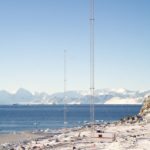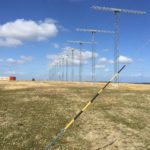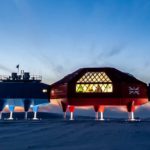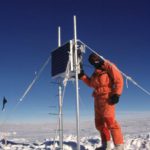Joule Heating
Joule Heating and Space Debris
- Start date
- 1 April, 2014
- End date
- 31 March, 2021
Society is highly dependent on the fleet of satellites that surround our planet. We rely on them for entertainment, communication, navigation, weather forecasting, and more. Many day-to-day activities, such as banking, depend on accurate time keeping provided by satellites such as GPS. However, the space around our planet is getting a bit crowded, not just by active satellites but by over 2900 dead ones and fragments caused by collisions, explosions and the from the rockets used to launch the satellites.
For satellite debris that is in, or crosses, low earth orbit (LEO), the Earth’s upper atmosphere (the thermosphere) acts as a brake, slowing the debris down. This changes the debris orbit, bringing it closer to Earth until eventually it will fall to the ground, often burning up as it goes. However in recent years this brake has been reducing in effectiveness; greenhouse gases that cause the lower atmosphere to heat up and expand have the opposite effect in the upper atmosphere, so that satellite debris has not been passing through as much atmosphere and has been staying in orbit for much longer.
The space agencies (e.g NASA and ESA) use ground radars to track a lot of the debris so that they can avoid potentially devastating collisions, but they cannot detect the really small debris and there are about 750000 objects between 1 cm and 10 cm diameter (not to mention the multitude much smaller items) that can cause significant damage. Keeping track of this sort of debris requires good modelling of the space environment and the factors that affect the orbits of debris.
Space Weather can heat up the upper atmosphere over the poles which temporarily expands the upper atmosphere. This changes the orbits of satellites that cross the polar regions. This joule heating is driven by increased electrical currents that flow through our ionosphere and the interaction between ions and the neutral atmosphere. To better model the changes in space debris it is essential to better understand this joule heating effect.
Andrew Kavanagh
Middle Atmosphere Vertical Coupling Analyst
BAS Science Management Team, BAS-Arctic Working Group, Space Weather and Atmosphere team



